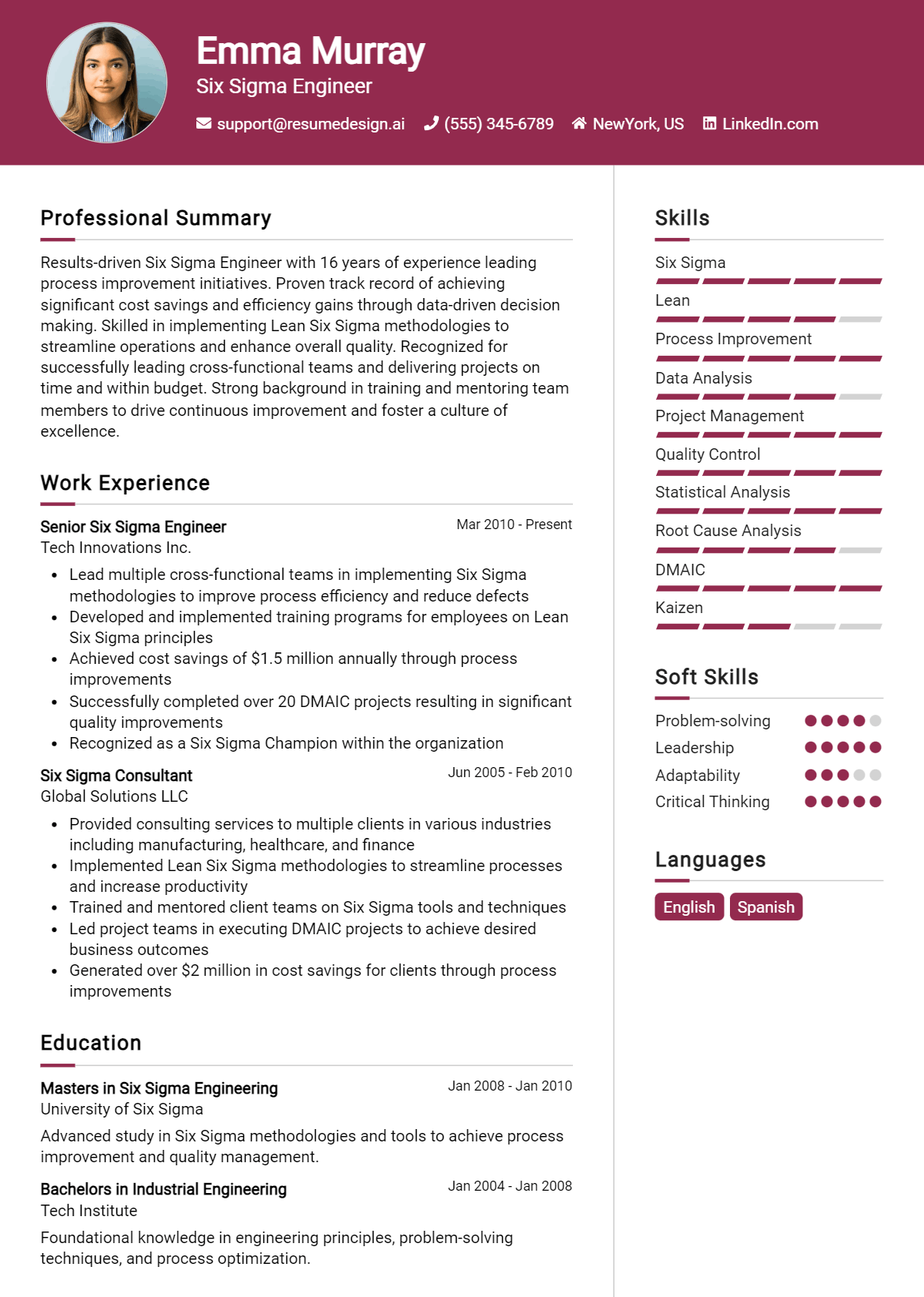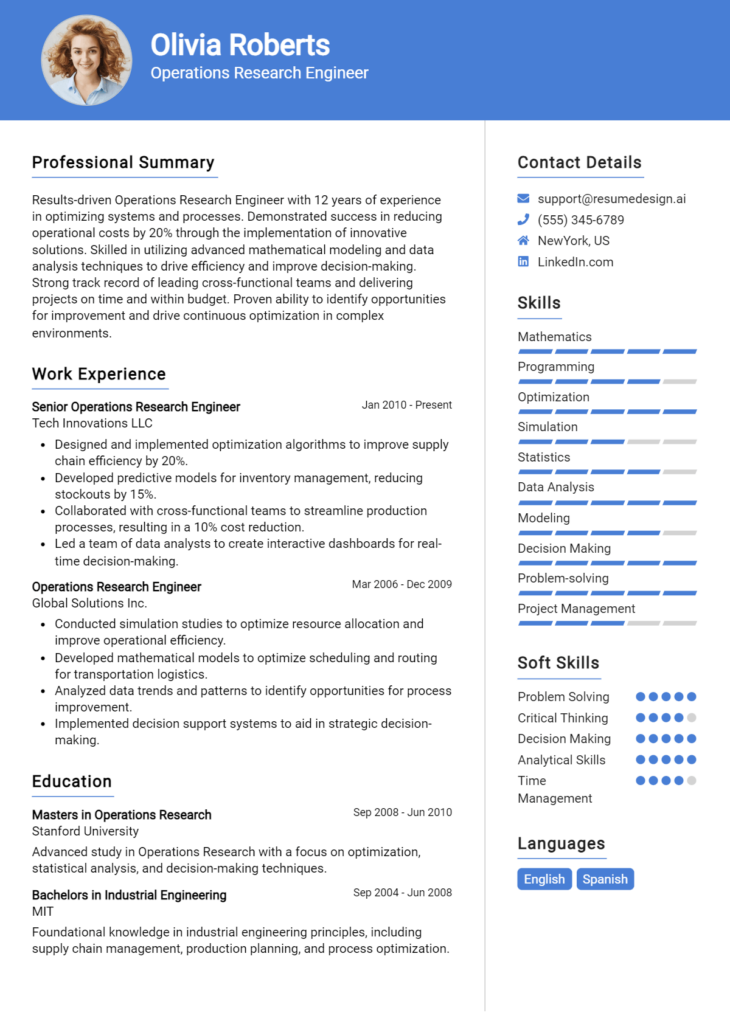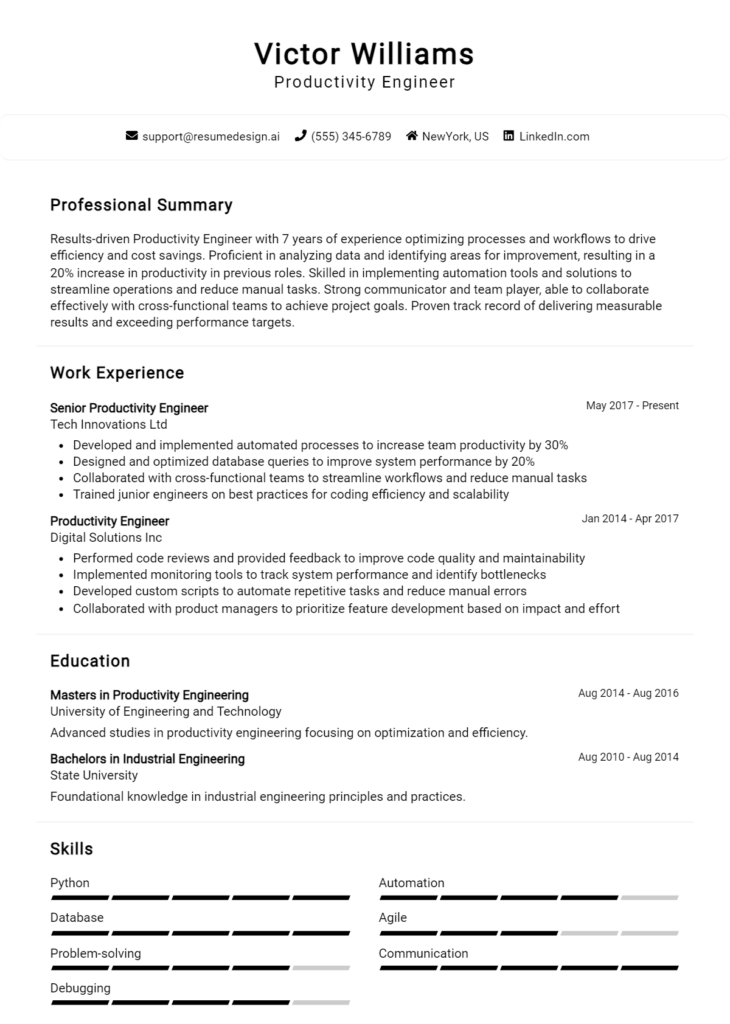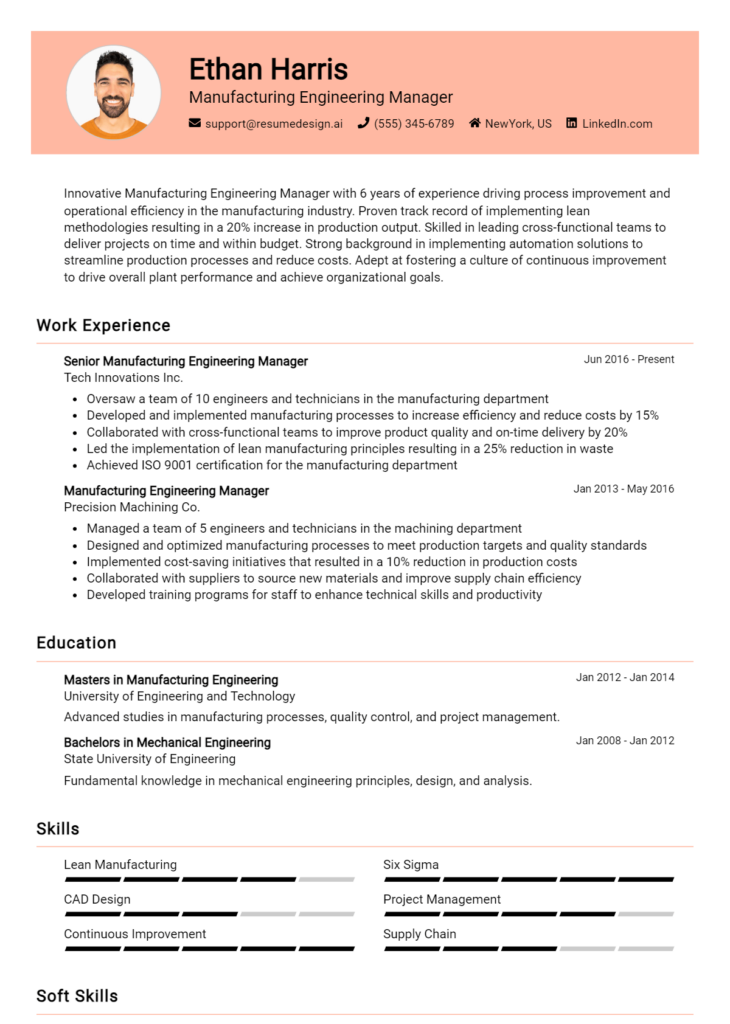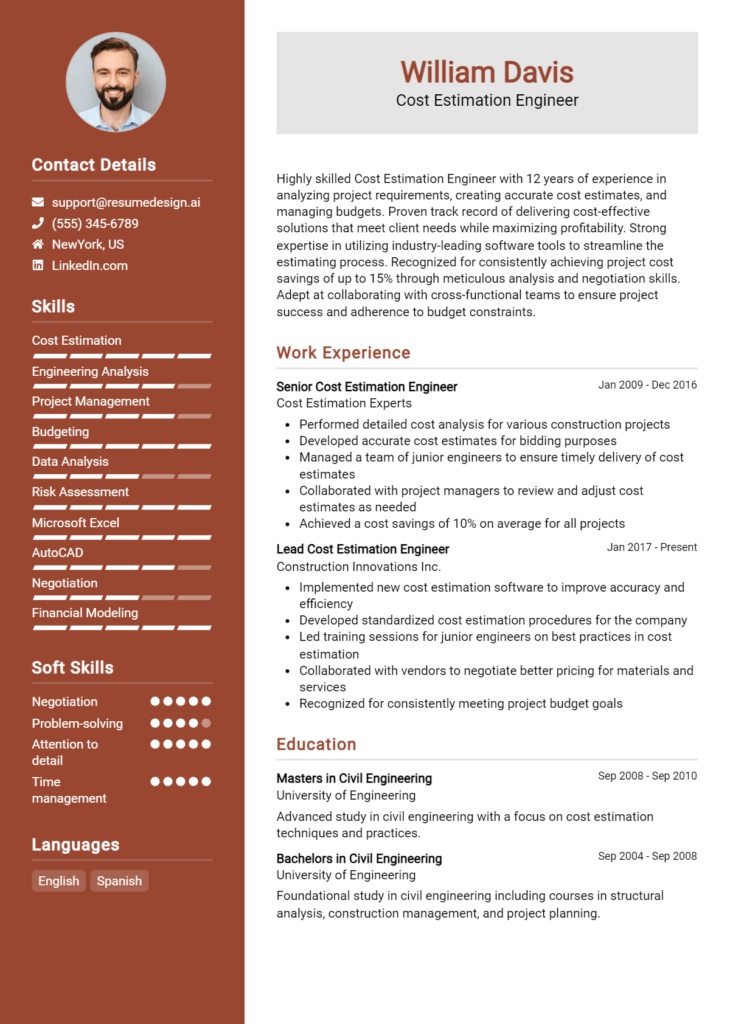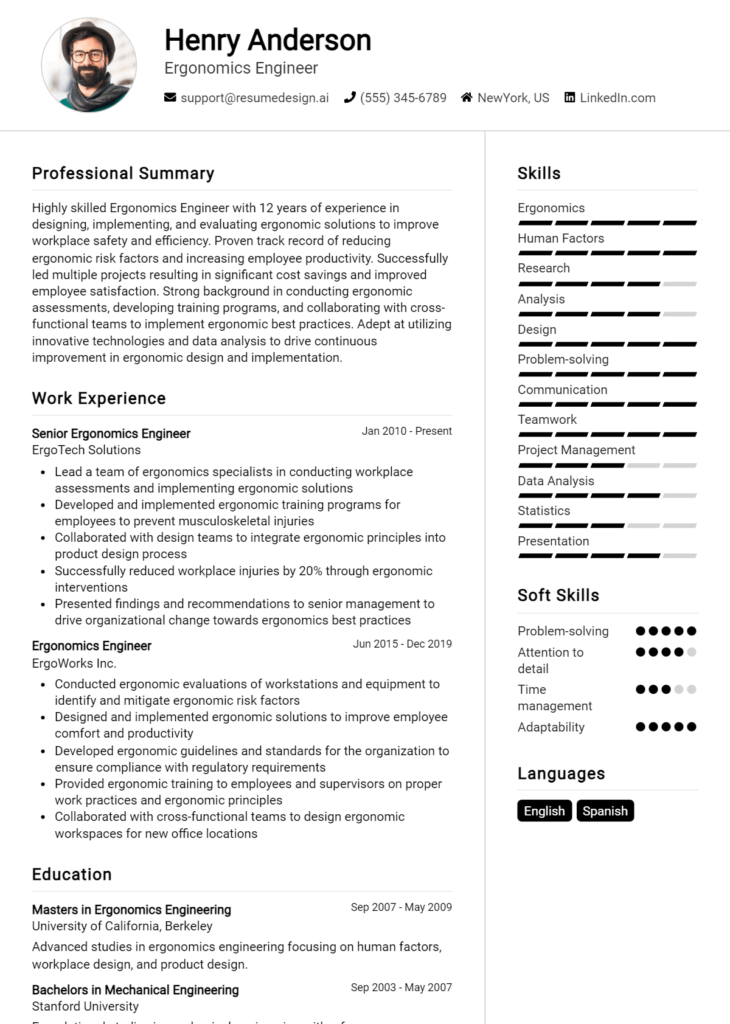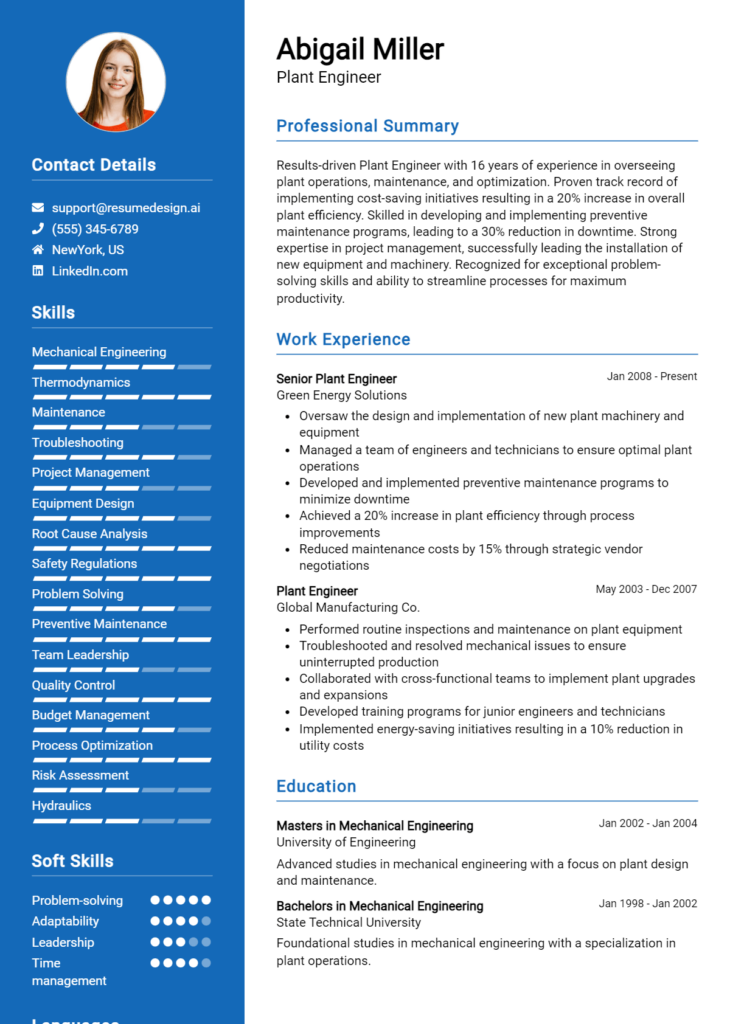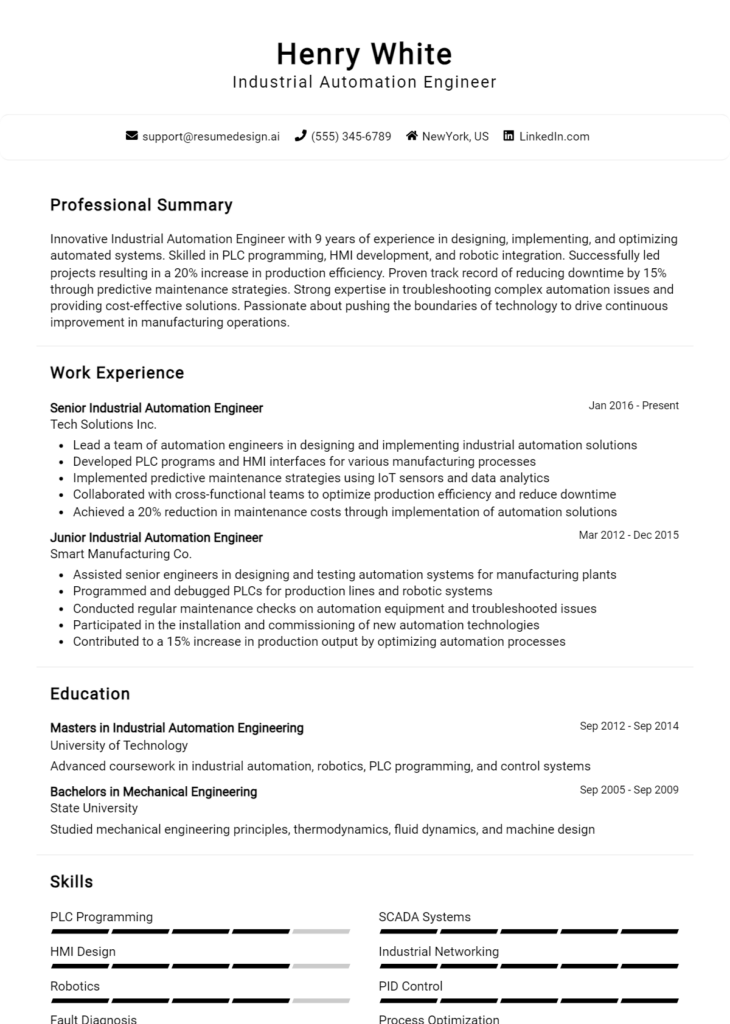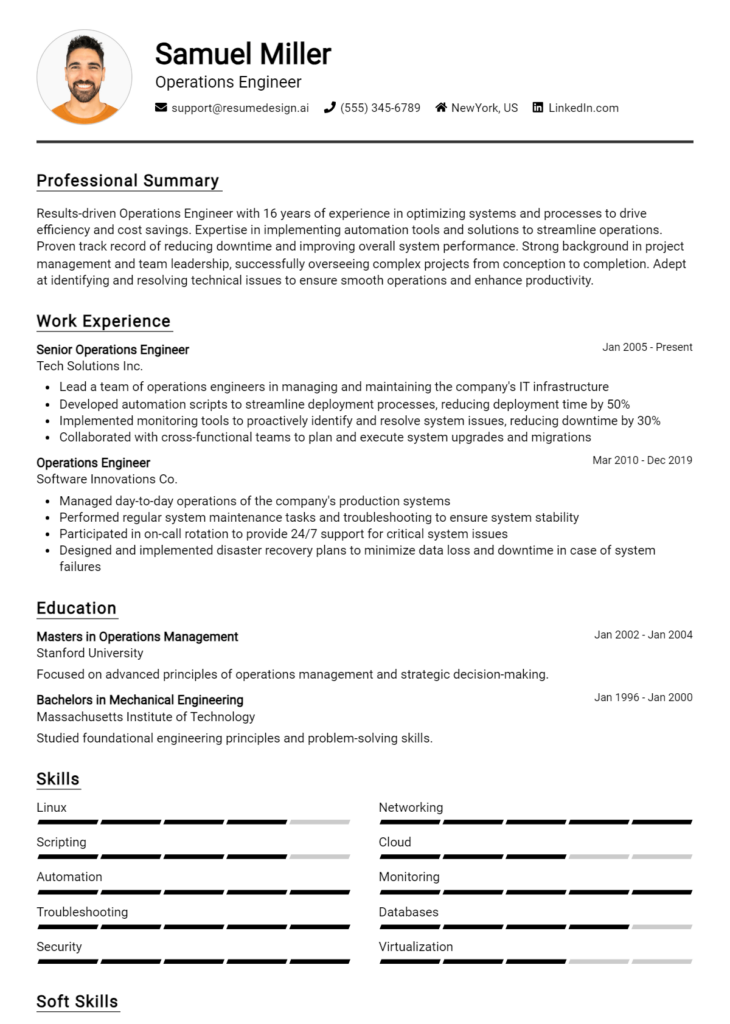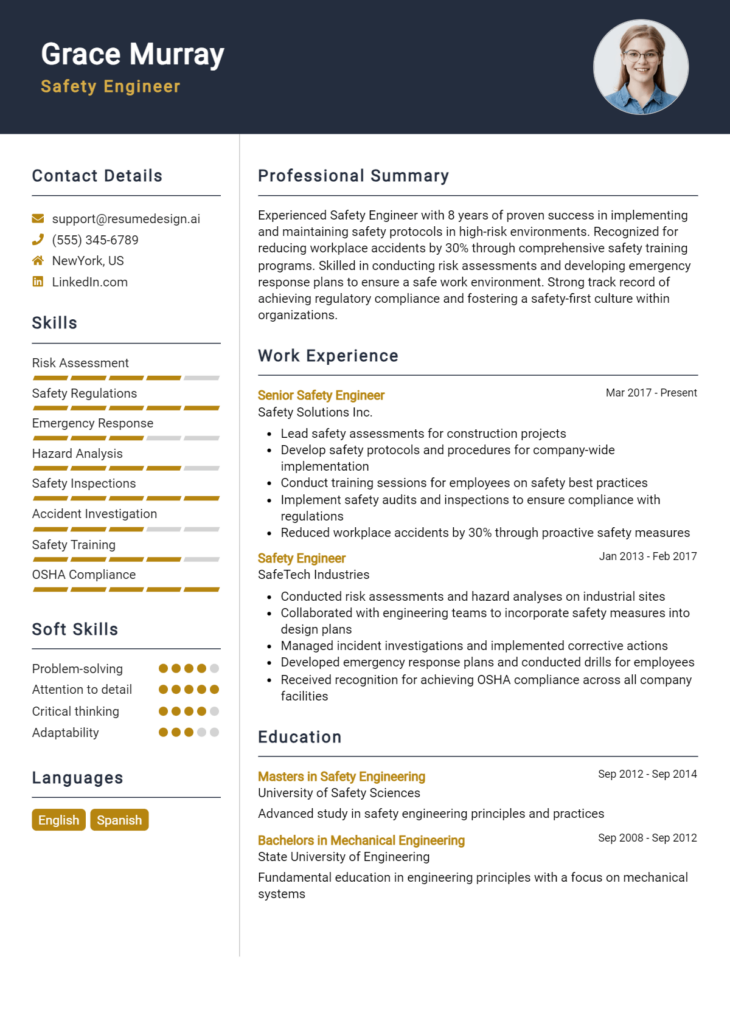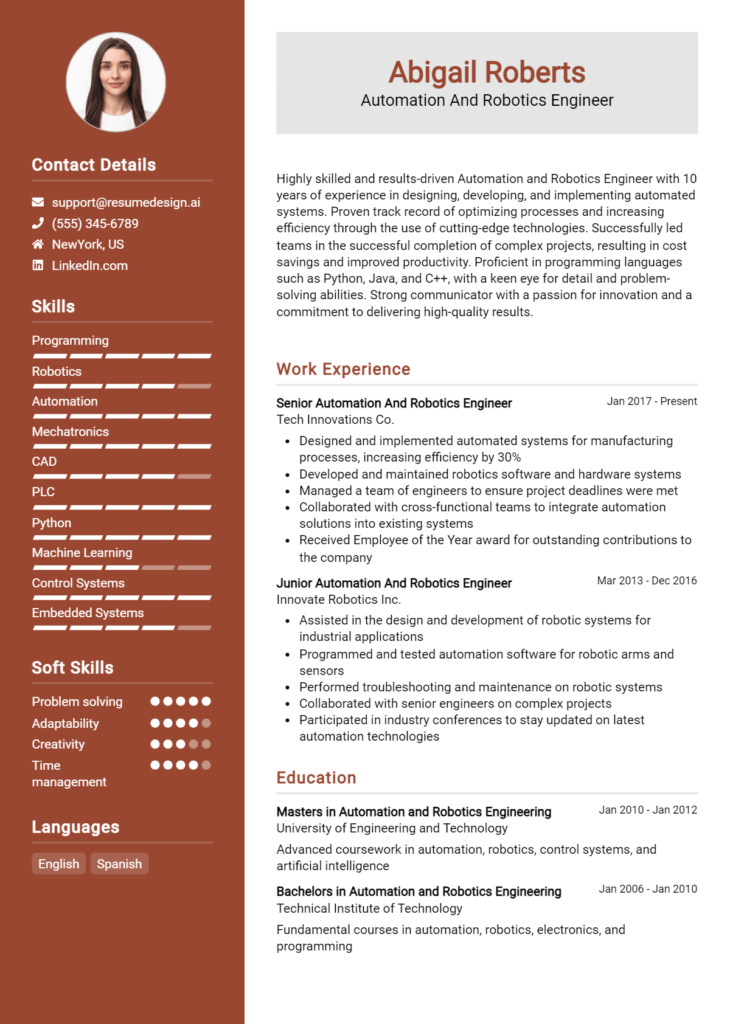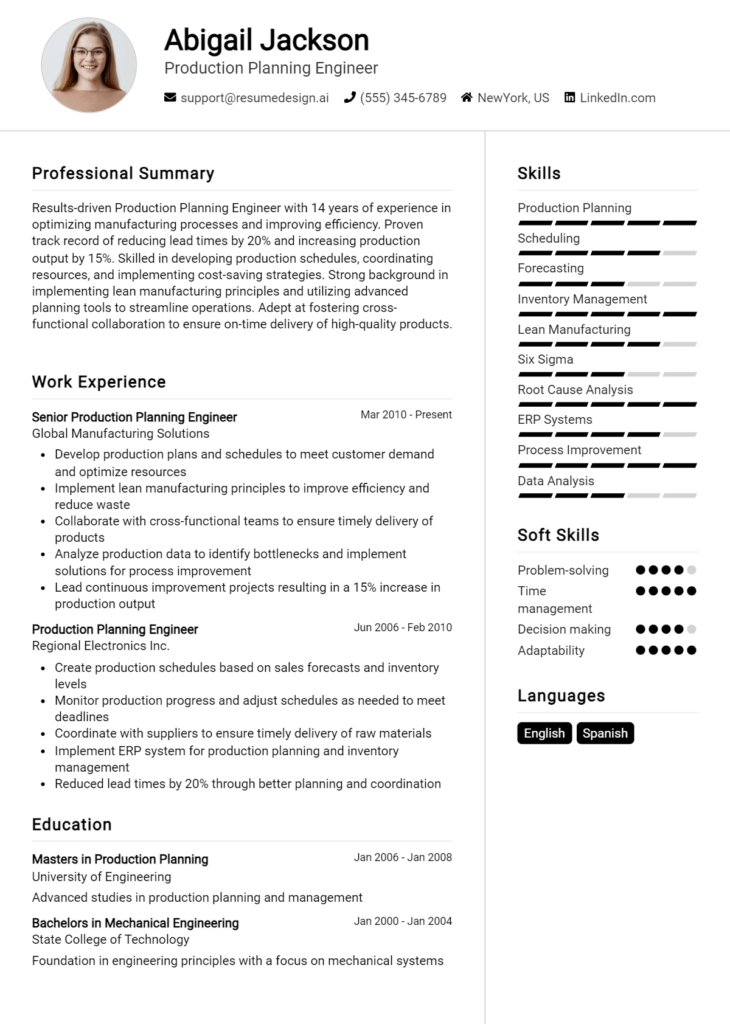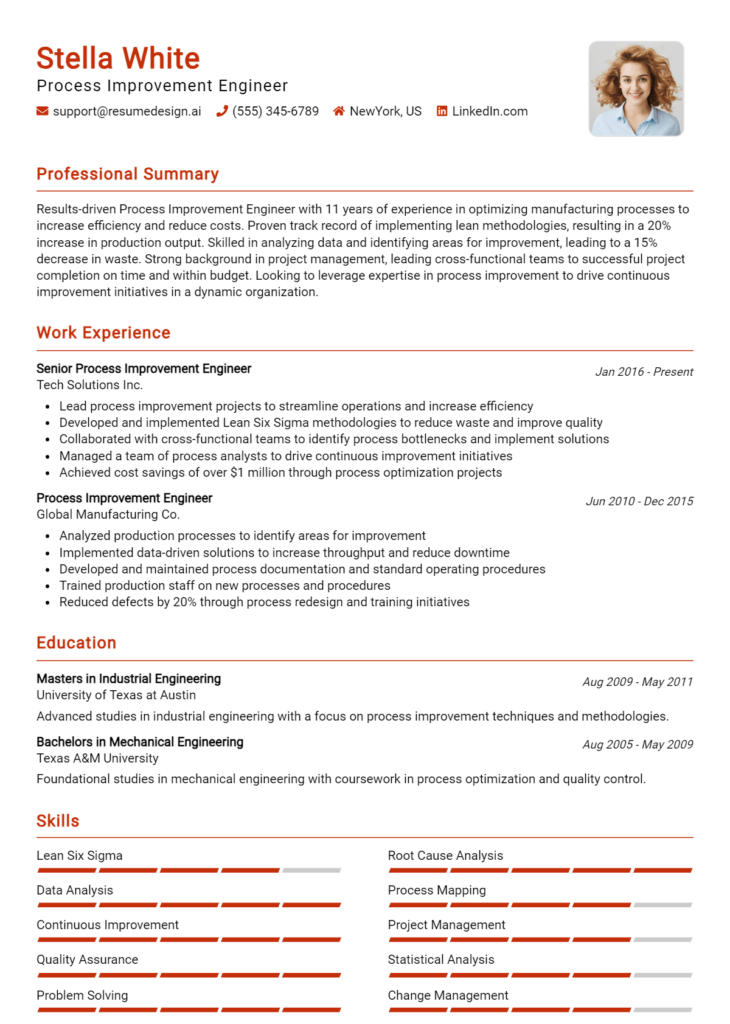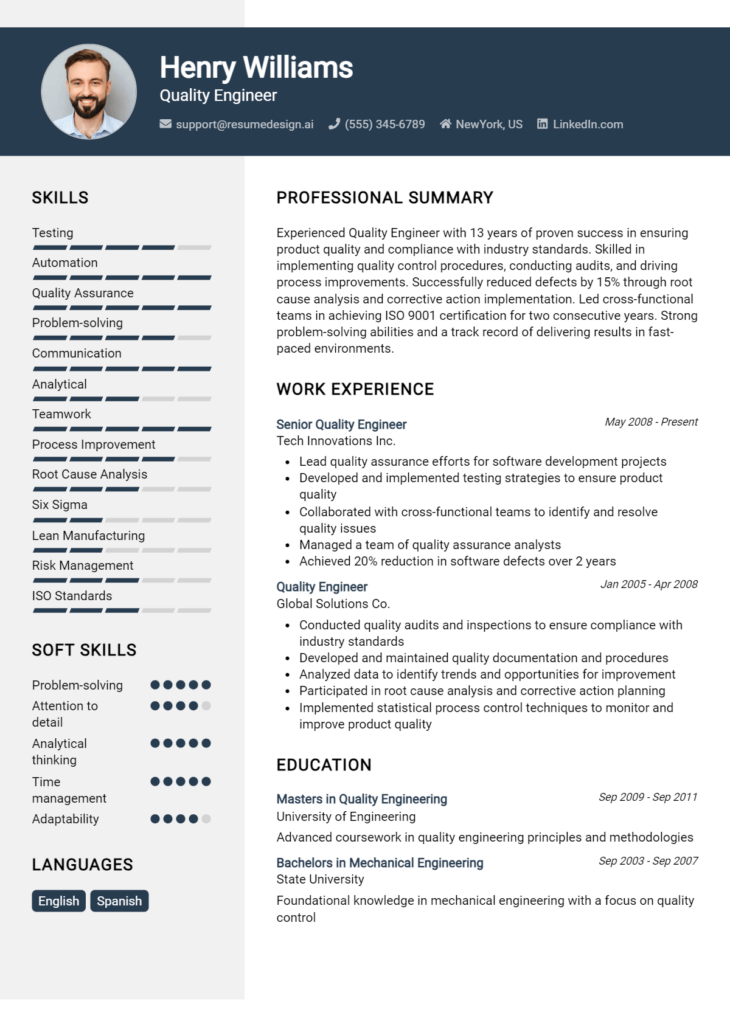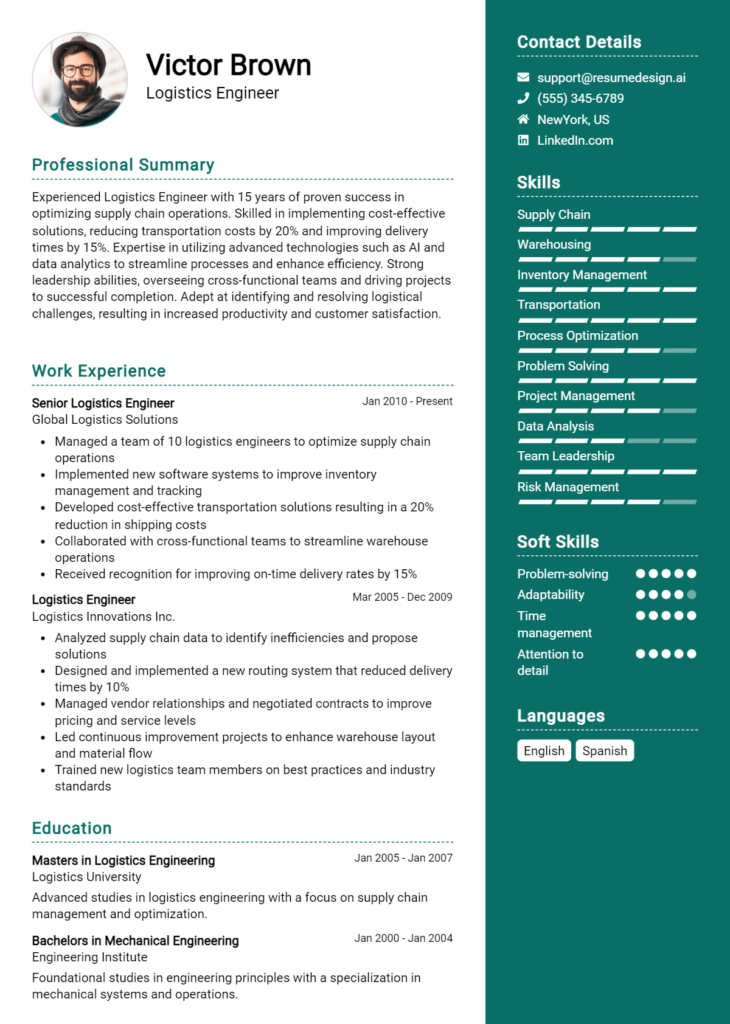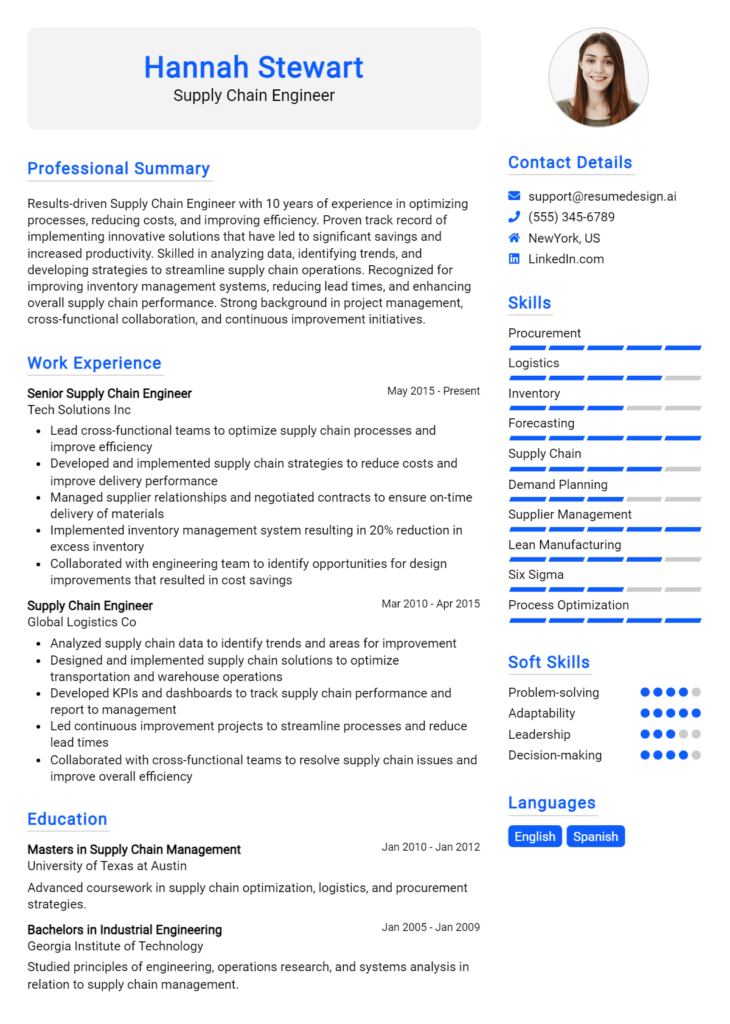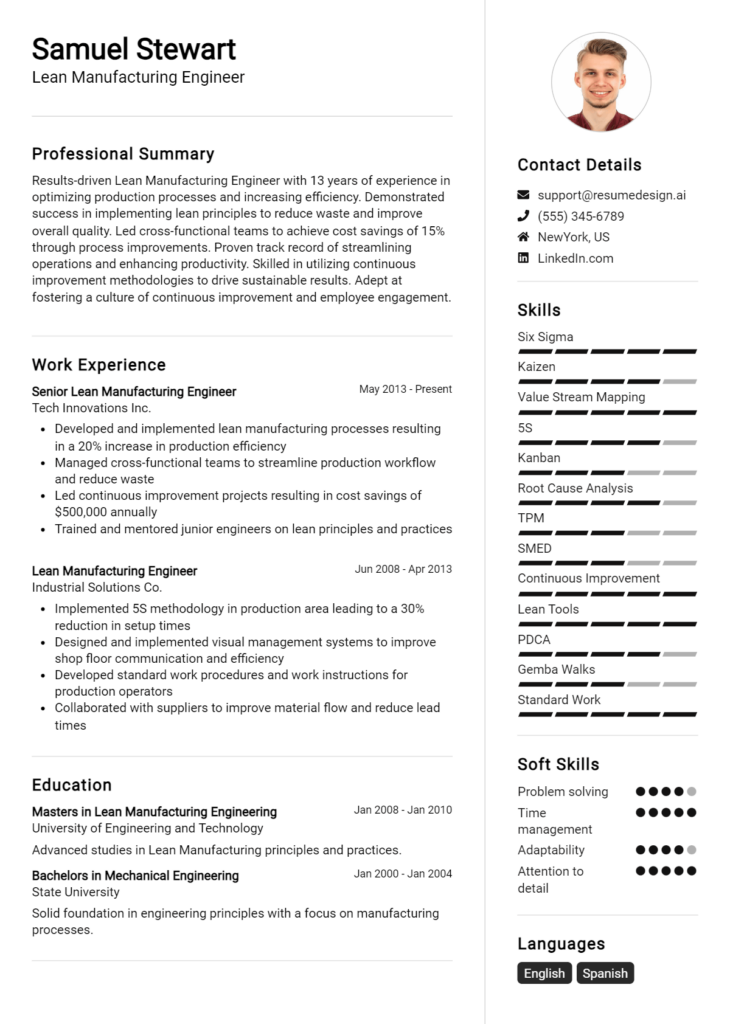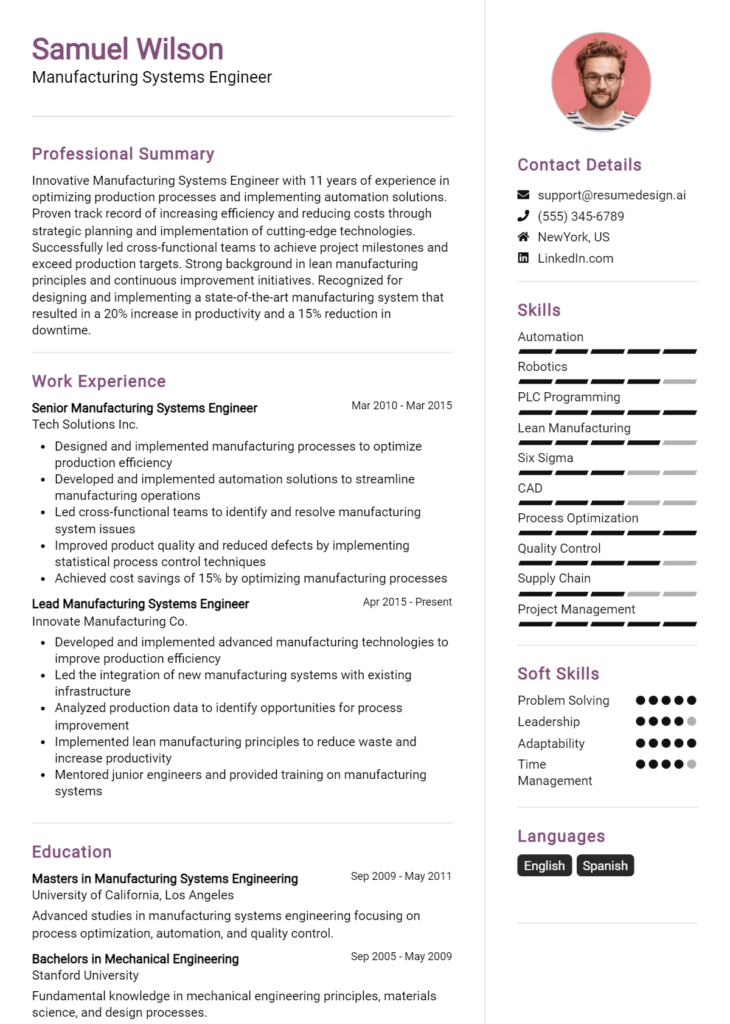Six Sigma Engineer Core Responsibilities
A Six Sigma Engineer plays a crucial role in optimizing processes and enhancing operational efficiency across various departments. Key responsibilities include data analysis, process mapping, and implementing improvement strategies that reduce defects and variability. This professional must possess technical skills in statistical analysis, problem-solving capabilities, and a strong understanding of Lean methodologies. These skills are vital in aligning departmental objectives with the organization's overall goals. A well-structured resume can effectively demonstrate these qualifications to potential employers.
Common Responsibilities Listed on Six Sigma Engineer Resume
- Conducting data analysis to identify process inefficiencies.
- Leading cross-functional teams in process improvement initiatives.
- Facilitating training sessions on Six Sigma methodologies.
- Developing and implementing control plans to sustain improvements.
- Performing root cause analysis to address quality issues.
- Utilizing statistical tools for process evaluation and performance measurement.
- Creating process documentation and standard operating procedures.
- Collaborating with management to align projects with business objectives.
- Monitoring project progress and reporting results to stakeholders.
- Driving a culture of continuous improvement within the organization.
- Preparing and presenting findings to executive leadership.
High-Level Resume Tips for Six Sigma Engineer Professionals
In today's competitive job market, a well-crafted resume is vital for Six Sigma Engineer professionals seeking to make a lasting impression on potential employers. Your resume often serves as the first point of contact with hiring managers, making it crucial to accurately reflect your skills, achievements, and understanding of Six Sigma methodologies. A strong resume not only highlights your technical competencies but also showcases your ability to drive process improvements and deliver measurable results. In this guide, we will offer practical and actionable resume tips specifically tailored for Six Sigma Engineer professionals, ensuring you stand out in a crowded field.
Top Resume Tips for Six Sigma Engineer Professionals
- Tailor your resume to each job description to align your skills and experiences with the specific needs of the employer.
- Highlight relevant Six Sigma certifications, such as Green Belt or Black Belt, prominently at the top of your resume.
- Showcase your experience with process improvement projects, including specific methodologies used (e.g., DMAIC, DMADV).
- Quantify your achievements by including metrics that demonstrate the impact of your work, such as cost savings, efficiency gains, or quality improvements.
- Utilize industry-specific keywords to pass through Applicant Tracking Systems (ATS) and capture the attention of hiring managers.
- Include a dedicated section for technical skills and tools related to Six Sigma, such as statistical analysis software or process mapping tools.
- Use action verbs to describe your responsibilities and contributions, creating a dynamic and engaging narrative of your professional journey.
- Incorporate examples of cross-functional collaboration to showcase your ability to work effectively in team settings.
- Keep your resume concise and focused, ideally one page, while ensuring all critical information is easily accessible and well-organized.
By implementing these resume tips, Six Sigma Engineer professionals can significantly enhance their chances of landing a job in this specialized field. A well-structured and targeted resume not only reflects your qualifications but also demonstrates your commitment to excellence and continuous improvement—core tenets of Six Sigma methodology. Stand out from the competition and take the first step towards your next career opportunity with a compelling resume that captures your unique value proposition.
Why Resume Headlines & Titles are Important for Six Sigma Engineer
In the competitive landscape of job applications, a well-crafted resume headline or title can be a game-changer for Six Sigma Engineers. This crucial component serves as the first impression, allowing candidates to succinctly present their qualifications and expertise to potential employers. A strong headline not only captures the attention of hiring managers but also effectively summarizes a candidate's key strengths in a single impactful phrase. It should be concise, relevant, and tailored to the specific Six Sigma role being applied for, ensuring that it resonates with the hiring team's expectations and requirements.
Best Practices for Crafting Resume Headlines for Six Sigma Engineer
- Keep it concise: Limit your headline to one impactful sentence.
- Be role-specific: Use keywords relevant to Six Sigma and the job description.
- Highlight key achievements: Incorporate quantifiable accomplishments when possible.
- Use action-oriented language: Start with strong action verbs to convey confidence.
- Incorporate industry terms: Familiarize yourself with Six Sigma terminology to demonstrate expertise.
- Avoid jargon: Ensure clarity and avoid overly technical language that may confuse hiring managers.
- Tailor for the role: Customize your headline for each application to align with specific job requirements.
- Reflect your unique value: Showcase what sets you apart from other candidates in the field.
Example Resume Headlines for Six Sigma Engineer
Strong Resume Headlines
"Certified Six Sigma Engineer with 5+ Years of Experience in Process Improvement and Cost Reduction"
“Results-Driven Six Sigma Professional Specializing in Lean Methodologies and Quality Management”
“Experienced Six Sigma Engineer Committed to Delivering Operational Excellence and Enhanced Productivity”
Weak Resume Headlines
“Engineer Looking for Job”
“Six Sigma Engineer with Various Skills”
The strong headlines are effective because they clearly convey the candidate's key strengths, using specific metrics and industry terminology that align with the job requirements. They not only capture the essence of the candidates' expertise but also immediately position them as valuable assets to potential employers. In contrast, the weak headlines fail to impress due to their vague and generic nature, lacking the specificity and impact necessary to engage hiring managers. Without a clear indication of skills or accomplishments, these headlines do little to differentiate the candidate in a crowded job market.
Writing an Exceptional Six Sigma Engineer Resume Summary
A well-crafted resume summary is crucial for a Six Sigma Engineer as it serves as the first impression a hiring manager receives. This concise statement encapsulates your key skills, relevant experience, and notable accomplishments, immediately capturing the attention of potential employers. An impactful summary not only highlights what makes you a strong candidate but also aligns your qualifications with the specific requirements of the job. By tailoring your summary to the role you're applying for, you set the stage for a compelling narrative that encourages hiring managers to delve deeper into your resume.
Best Practices for Writing a Six Sigma Engineer Resume Summary
- Quantify achievements: Use numbers to demonstrate your impact, such as percentage improvements or cost savings.
- Focus on skills: Highlight specific Six Sigma methodologies and tools you are proficient in, like DMAIC or Lean.
- Tailor the summary: Customize your resume summary to align closely with the job description and required qualifications.
- Be concise: Aim for 3-5 sentences that succinctly convey your strengths and experience.
- Use action verbs: Start sentences with strong action verbs to convey your proactive approach.
- Showcase certifications: Mention relevant Six Sigma certifications (e.g., Green Belt, Black Belt) to enhance credibility.
- Highlight relevant experience: Focus on previous roles and projects that directly relate to the position you’re applying for.
- Communicate soft skills: Incorporate key soft skills such as problem-solving, teamwork, and leadership that complement your technical abilities.
Example Six Sigma Engineer Resume Summaries
Strong Resume Summaries
Results-driven Six Sigma Black Belt with over 8 years of experience leading cross-functional teams in process optimization initiatives. Achieved a 30% reduction in operational costs and improved product quality by 25% through the implementation of Lean Six Sigma methodologies.
Detail-oriented Six Sigma Engineer skilled in DMAIC and statistical analysis, with a proven track record of enhancing manufacturing efficiency by up to 40%. Successfully led a project that streamlined production processes, resulting in a $500,000 annual savings.
Certified Six Sigma Green Belt with 5 years of experience in quality improvement and project management. Spearheaded a team project that decreased defect rates by 15%, significantly enhancing customer satisfaction scores and driving repeat business.
Weak Resume Summaries
Experienced engineer with knowledge of Six Sigma principles and a focus on process improvement.
Motivated professional seeking to leverage skills in a Six Sigma role. Good with teamwork and problem-solving.
The strong resume summaries are effective because they provide specific achievements, showcase relevant skills, and demonstrate a clear connection to the Six Sigma Engineer role. They quantify results and present a narrative that highlights the candidate's impact on previous projects. In contrast, the weak summaries lack detail, fail to quantify outcomes, and are overly generic, which likely makes them less memorable to hiring managers.
Work Experience Section for Six Sigma Engineer Resume
The work experience section in a Six Sigma Engineer resume is crucial as it provides potential employers with insight into a candidate's technical skills, leadership abilities, and track record of delivering high-quality products. This section serves as a platform for showcasing specific achievements that align with industry standards, emphasizing how the candidate has successfully implemented Six Sigma methodologies to improve processes, reduce defects, and enhance overall efficiency. By quantifying achievements and demonstrating a clear impact on organizational performance, candidates can effectively differentiate themselves from others in the field.
Best Practices for Six Sigma Engineer Work Experience
- Use quantifiable metrics to demonstrate results, such as percentage improvements in process efficiency or reductions in defect rates.
- Highlight specific Six Sigma tools and methodologies utilized, such as DMAIC, DFSS, and root cause analysis.
- Emphasize leadership roles in projects, showcasing your ability to manage teams and drive initiatives.
- Include relevant industry certifications, such as Green Belt or Black Belt, to validate technical expertise.
- Focus on collaboration by detailing cross-functional teamwork and stakeholder engagement.
- Tailor your experiences to align with the job description, ensuring relevance to the prospective employer's needs.
- Use action verbs to convey a sense of initiative and impact in your previous roles.
- Keep descriptions concise and focused, avoiding jargon that may confuse non-technical readers.
Example Work Experiences for Six Sigma Engineer
Strong Experiences
- Led a cross-functional team in a DMAIC project that achieved a 30% reduction in production defects, resulting in annual savings of $250,000.
- Implemented a Lean Six Sigma initiative that streamlined the supply chain process, reducing lead time by 25% and improving customer satisfaction scores.
- Facilitated training sessions for 50+ employees on Six Sigma principles, which resulted in a 15% increase in process efficiency across multiple departments.
- Directed a project that introduced statistical process control (SPC) tools, leading to a 40% decrease in variation and enhanced product quality.
Weak Experiences
- Worked on various projects without specifying outcomes or contributions.
- Assisted in improving processes but did not quantify the impact or describe methods used.
- Participated in team meetings and discussions related to Six Sigma, lacking detail on personal contributions.
- Involved in process improvement initiatives but failed to mention any specific tools or methodologies applied.
The examples provided are considered strong because they include specific, quantifiable outcomes that demonstrate the candidate's direct impact on process improvements and operational efficiencies. They highlight technical leadership and collaboration, showcasing how the candidate contributed to team success. In contrast, the weak experiences are vague and lack measurable results, failing to convey the candidate's true capabilities and contributions to potential employers.
Education and Certifications Section for Six Sigma Engineer Resume
The education and certifications section of a Six Sigma Engineer resume is critical for showcasing the candidate's academic achievements and professional qualifications relevant to the field. This section serves as a testament to the individual's commitment to continuous learning and adherence to industry standards. By including relevant coursework, recognized certifications, and specialized training, candidates can significantly enhance their credibility and demonstrate their alignment with the specific requirements of the Six Sigma Engineer role. Employers often prioritize candidates with strong educational backgrounds and certifications, as these elements indicate a solid foundation in quality management principles and methodologies.
Best Practices for Six Sigma Engineer Education and Certifications
- Include only relevant degrees and certifications that pertain to Six Sigma and quality management.
- List certifications in order of relevance, starting with the most prestigious or recognized in the industry.
- Provide details about relevant coursework that specifically relates to Six Sigma methodologies and tools.
- Highlight any specialized training or workshops attended that enhance your qualifications.
- Use clear and precise language to describe your educational achievements and certifications.
- Keep the section concise yet informative, avoiding excessive details that may detract from key qualifications.
- Consider including the dates of completion for certifications to demonstrate recent engagement with the field.
- Emphasize any leadership roles taken during educational pursuits that relate to process improvement or project management.
Example Education and Certifications for Six Sigma Engineer
Strong Examples
- Bachelor of Science in Industrial Engineering, University of XYZ, Graduated May 2020
- Certified Six Sigma Black Belt (CSSBB), American Society for Quality (ASQ), Achieved March 2022
- Lean Six Sigma Green Belt Certification, XYZ Training Institute, Completed August 2021
- Relevant Coursework: Statistical Quality Control, Process Improvement Techniques, Quality Management Systems
Weak Examples
- Associate’s Degree in General Studies, Community College of ABC, Graduated June 2019
- Certification in Basic Microsoft Office, Completed September 2020
- High School Diploma, Anytown High School, Graduated May 2015
- Certification in First Aid and CPR, Acquired July 2020
The strong examples are considered effective as they directly align with the skills and knowledge required for a Six Sigma Engineer position, showcasing relevant degrees, industry-recognized certifications, and pertinent coursework. In contrast, the weak examples lack relevance to Six Sigma methodologies and do not reflect a commitment to professional development in this specific field, thereby diminishing the candidate's competitive edge.
Top Skills & Keywords for Six Sigma Engineer Resume
In the competitive landscape of engineering, a Six Sigma Engineer's resume must showcase a blend of both technical and interpersonal skills. These skills not only highlight your ability to implement process improvements and quality management but also demonstrate your capacity to collaborate effectively within a team-oriented environment. A well-crafted resume that emphasizes the right skills can significantly increase your chances of standing out to potential employers and securing an interview. Including a comprehensive list of skills relevant to the Six Sigma framework is essential, as it reflects your expertise and commitment to operational excellence.
Top Hard & Soft Skills for Six Sigma Engineer
Soft Skills
- Analytical Thinking
- Problem-Solving
- Communication
- Team Collaboration
- Leadership
- Adaptability
- Project Management
- Attention to Detail
- Conflict Resolution
- Time Management
- Critical Thinking
- Interpersonal Skills
- Negotiation
- Emotional Intelligence
- Creativity
Hard Skills
- Six Sigma Methodologies (DMAIC, DMADV)
- Process Mapping
- Statistical Analysis
- Root Cause Analysis
- Lean Manufacturing Principles
- Quality Control Tools (SPC, FMEA)
- Data Analysis Software (Minitab, JMP)
- Process Improvement Techniques
- Risk Management
- Project Management Software (MS Project, Asana)
- Workflow Optimization
- Value Stream Mapping
- Training and Mentoring
- ISO Standards Knowledge
- Performance Metrics Development
By highlighting these hard and soft skills in your resume, you can effectively convey your qualifications to prospective employers and enhance your work experience narrative within the context of Six Sigma engineering.
Stand Out with a Winning Six Sigma Engineer Cover Letter
Dear Hiring Manager,
I am writing to express my interest in the Six Sigma Engineer position at [Company Name] as advertised on [Job Board/Company Website]. With a strong background in process improvement methodologies combined with a passion for operational excellence, I am confident in my ability to contribute effectively to your team. My experience in leading cross-functional projects and implementing Six Sigma principles has equipped me with the tools necessary to drive significant improvements in efficiency, quality, and overall business performance.
In my previous role at [Previous Company], I successfully led a project that reduced production defects by over 30% through the application of DMAIC (Define, Measure, Analyze, Improve, Control) methodology. By utilizing statistical analysis and root cause identification techniques, I was able to streamline processes and foster a culture of continuous improvement. Collaborating closely with various departments, I ensured that all stakeholders were aligned with the Six Sigma initiatives, resulting in a sustainable impact that was recognized company-wide.
I am particularly drawn to the opportunity at [Company Name] due to your commitment to innovation and quality. I admire your initiatives in utilizing data-driven decision-making to enhance operational processes. As a Six Sigma Green Belt certified professional, I am eager to bring my analytical skills and experience in Lean methodologies to your organization. I am excited about the prospect of working alongside a talented team to identify opportunities for improvement and implement solutions that will foster both efficiency and excellence.
Thank you for considering my application. I look forward to the opportunity to discuss how my skills and experiences align with the goals of [Company Name]. I am enthusiastic about the possibility of contributing to your team and driving continuous improvement initiatives that will lead to exceptional results.
Sincerely,
[Your Name]
[Your Contact Information]
Common Mistakes to Avoid in a Six Sigma Engineer Resume
When crafting a resume for a Six Sigma Engineer position, it's crucial to present your skills and experiences in a clear and impactful manner. However, many candidates make common mistakes that can undermine their chances of landing an interview. By avoiding these pitfalls, you can ensure your resume stands out as a strong representation of your qualifications and expertise in Six Sigma methodologies.
Lack of Specific Metrics: Failing to quantify your achievements can make your contributions seem vague. Use specific metrics to demonstrate how your efforts improved processes, reduced waste, or saved costs.
Overly Technical Language: While technical skills are essential, using excessive jargon can alienate readers who may not be familiar with all the terms. Strive for clarity and balance technical terminology with understandable language.
Ignoring Tailoring for Each Job Application: Sending out a generic resume can lead to missed opportunities. Tailor your resume to each job description, highlighting relevant experiences and skills that align with the specific requirements of the role.
Neglecting Soft Skills: Six Sigma Engineers often work in teams and need strong interpersonal skills. Don’t overlook the importance of showcasing your ability to communicate, collaborate, and lead.
Inconsistent Formatting: A resume that is poorly organized or inconsistently formatted can distract from your qualifications. Use a clean, professional layout with consistent font sizes, bullet points, and spacing to enhance readability.
Focusing Solely on Job Duties: Simply listing job responsibilities does not convey the impact of your work. Focus on your accomplishments and the value you added in each role to give potential employers a clear picture of your capabilities.
Omitting Certifications and Training: Six Sigma certifications are vital in this field. Ensure you prominently feature any relevant certifications, such as Green Belt or Black Belt, and any additional training in methodologies or tools.
Not Including a Summary or Objective Statement: A well-crafted summary or objective statement can quickly convey your career goals and highlight your top skills. Omitting this section may cause your resume to lack direction and focus.
Conclusion
As a Six Sigma Engineer, your role is integral in driving process improvement and ensuring quality in manufacturing and service environments. This article has highlighted the essential skills and qualifications that define a successful Six Sigma Engineer, including proficiency in statistical analysis, project management, and a deep understanding of Six Sigma methodologies.
We discussed the importance of certifications, such as Lean Six Sigma Green Belt or Black Belt, and how they can enhance your credibility in the field. Additionally, we explored the significance of soft skills like communication, teamwork, and problem-solving, which are vital for collaborating with cross-functional teams and leading improvement projects.
In conclusion, as you embark on or advance your career as a Six Sigma Engineer, it's crucial to present a strong resume that effectively showcases your expertise and achievements. Take a moment to review your resume and ensure it aligns with the key attributes and qualifications discussed in this article.
To assist you in this process, consider utilizing various resources available to enhance your resume. Explore our resume templates for a professional layout, use our resume builder for an easy and efficient creation process, and check out resume examples for inspiration. Don’t forget to complement your application with our cover letter templates to make a strong first impression. Take action today and ensure your resume reflects the outstanding Six Sigma Engineer you are!

